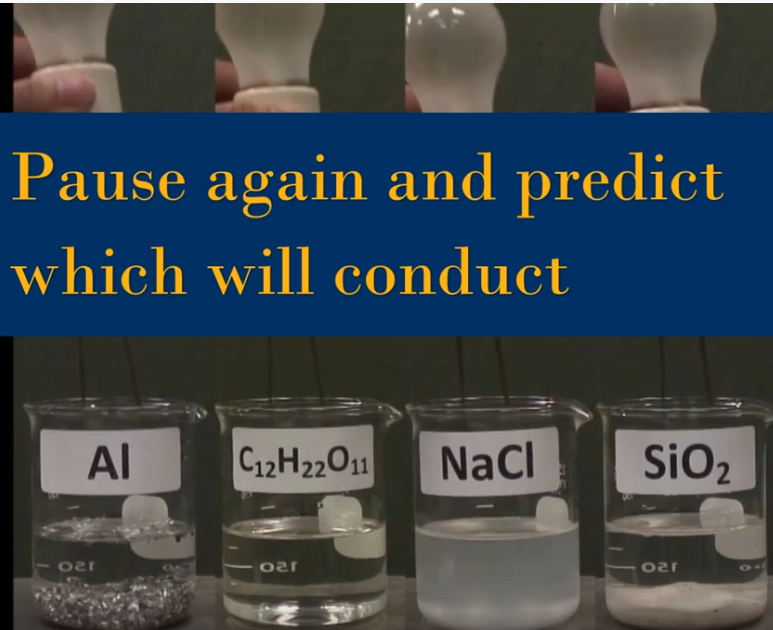Contents of this post
Review of Part 1
- Substances are made of up small particles (atoms, molecules, ions) that can mix together and may or may not take up the same space after mixing.
- These particles have kinetic/thermal energy, and thus are always moving and/or vibrating.
- Solutions contain two parts.
- A solvent is the majority part
- One or more solutes are the minority parts
Electrical conductivity and solutions
Watch the following video then answer the questions.
Quiz
Review
Many of you may have been surprised that pure water does not conduct electricity…but pure water does not conduct electricity. The reason we think about water as being dangerous around electricity is that almost no water is pure! All the water we interact with is a solution of some type; even our drinking water has fluoride and chlorine as solutes in it (fluoride for healthy teeth, and chlorine–in various chemical formulas–to prevent growth of microorganisms).
The copper aluminum metal was able to conduct electricity when it was dry because each grain of aluminum was touching another, and a continuous path of metal existed between the two probes. But when it was mixed in the water, the continuous path was broken because the aluminum fell to the bottom.
Molecules and ions
So, why does salt in solution conduct electricity, and sugar and silicon dioxide do not. The answer is in how these substances behave when dissolved in water. Watch the following video to look at the shapes of some substances.
If you want to create your own 3D models of compounds, visit Moview.org. Enter a name of a chemical in the search box in the upper left corner, and they will likely have a model of it.
Definitions
Molecules
Substances whose atoms are connected by sharing atoms and have a net charge of zero (just like with forces in opposite directions can cancel each other out, positives and negatives can cancel each other out) are called molecules. (Much more about this when you take chemistry, but this will do for now.)
Ions and ionic substances
Other substances have either a positive or negative charge. These can either be atoms combined similar to molecules, but still with a non-zero net charge, or single atoms with an ‘extra’ electron, or ‘missing’ an electrons. These substances are called ions. Neutral particles that combine both of these are called ionic substances. Salt is an example of an ionic compound.

